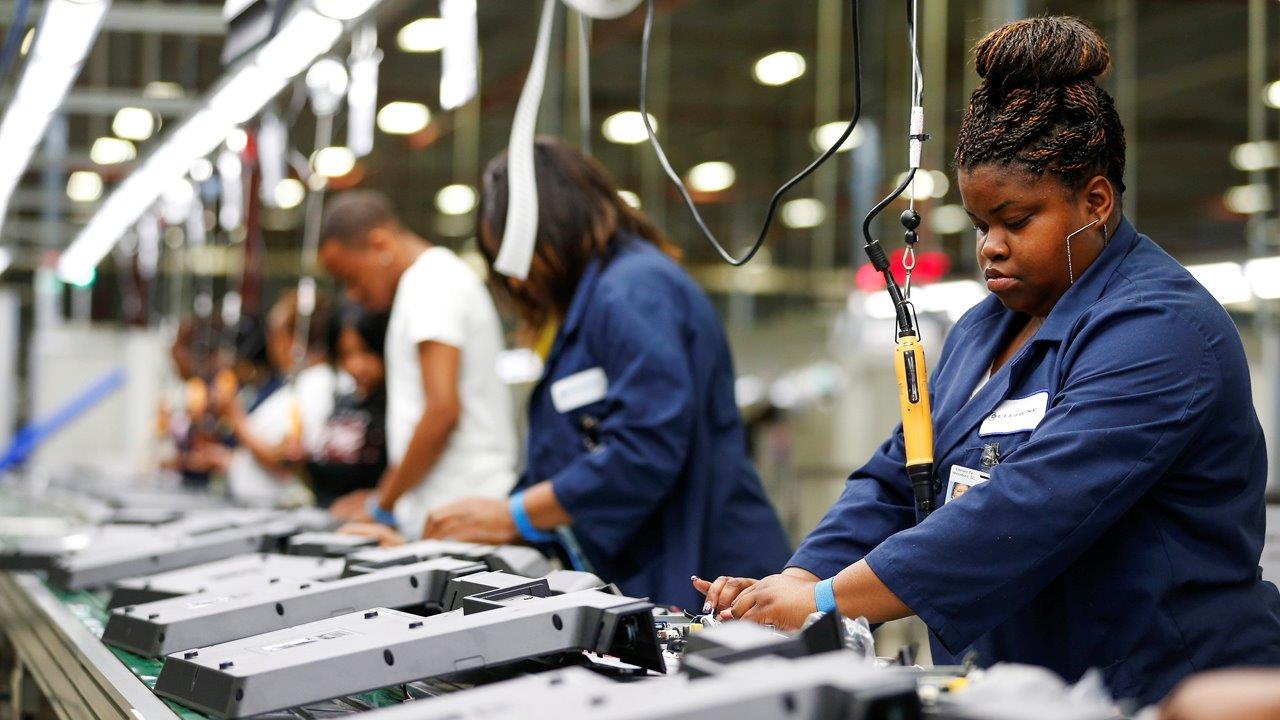U.S. Added 242,000 Jobs in February, Easing Recession Concerns
The U.S. added 242,000 jobs in February, a healthy number – easily exceeding analysts’ expectations -- that should help ease concerns the economy is falling back into a recession.
The headline unemployment rate was 4.9%, the lowest level in eight years. Analysts had predicted 190,000 new jobs last month at that the unemployment rate would hold steady at 4.9%.
The labor force participation rate also ticked higher to 62.9%, according to data released Friday by the U.S. Labor Department, a positive sign that thousands of workers have gotten off the sidelines and re-entered the workforce. And job creation in December and January was revised higher, adding 30,000 additional jobs for the two-month period.
“The financial markets’ panic over a possible recession in the U.S. has been misplaced, if the recent string of jobs reports are any indication,” said Mark Hamrick, senior economic analyst at Bankrate.com.
Since the beginning of the year some economists have been sounding the alarm for an imminent recession, citing weak corporate earnings growth in the second half of 2015, reports that overseas markets – namely China and Europe – were weakening, and the ongoing decline in the price of oil.
All of these factors sent U.S. stock markets into a tailspin in early January, contributing to the belief that the economy was souring rather than gaining momentum.
The one bright spot throughout this period has been consistent labor market strength. Job creation surged in December then fell off a bit in January but stayed healthy. Meanwhile, wage growth was showing signs of gaining steam, a key element to the Federal Reserve’s plan for normalizing U.S. monetary policy.
Wages didn’t move higher in February, however, slipping slightly as did the average hourly workforce.
“In February, average hourly earnings for all employees on private nonfarm payrolls declined by 3 cents to $25.35, following an increase of 12 cents in January,” the Labor Department said. “The average workweek for all employees on private nonfarm payrolls declined by 0.2 hour to 34.4 hours in February.”
Chris Williamson, chief economist at research firm Markit, said the wage growth decline in February was likely technical in nature. “While annual pay growth fell to 2.2%, a seven-month low, this will most likely be brushed aside as pay-back from a surge in January,” he said.
When the Fed raised rates in December for the first time in nearly a decade they did so citing the strength of U.S. labor markets. In fact, the Fed issued an optimistic view that as the labor market tightened wages would climb higher, pushing inflation upwards toward the Fed’s 2% target.
Based on that rosy forecast, the Fed said it planned to raise rates four more times in 2016. That projection is now in question, but given the ongoing labor market momentum additional rate hikes are certainly not off the table. Although a rate hike at their next meeting on March 15-16, once a virtual certainty, is now considered unlikely.
“The Federal Reserve will still be widely seen as standing pat on interest rates a couple of weeks from now,” Hamrick added. “This report shows more people going to work, but no burgeoning inflation.”
Fed policy makers have made a point of sticking to their guns with regard to long-term rate hike forecasts, namely that economic growth remains on track and that rates will continue to move higher in the coming months as the economic data warrants such moves.
San Francisco Federal Reserve President John Williams told Reuters earlier this week there has been no substantial change in his outlook on the U.S. economy or his opinion on the number of times the Fed should raise interest rates this year and next.
Health care, retail trade, food services and construction led the way in jobs gains last month. Meanwhile, “Employment in other major industries, including manufacturing, wholesale trade, transportation and warehousing, financial activities, professional and business services, and government, showed little change over the month,” the Labor Department reported.

